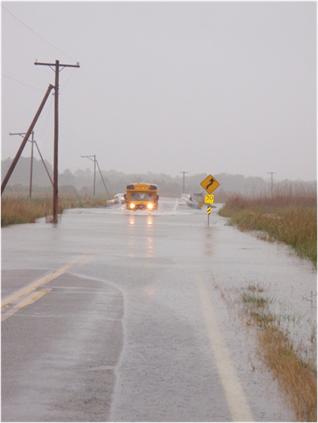Climate change affects the people and places we care about. Adaptation is a way to protect ourselves from the threats of climate change, including shifts in temperature, precipitation, and sea level rise.
Climate change is complicating the challenges we already face in protecting our public health.
The DNREC Division of Climate, Coastal and Energy collaborated with the Delaware Academy of Medicine and Delaware Public Health Association for an issue of the Delaware Journal of Public Health focused on climate and health.
Crossing Disciplines
At the Climate + Health Conference, medical professionals, environmental practitioners, and critical services providers explored threats to public health exacerbated by climate change. Read the summary report or visit de.gov/climatehealthconference for presentations and information.
Employee and Worker Safety
The Climate-Ready Workforce Pilot Project explores climate change-related health and safety risks to state employees who work outdoors or in work environments that are vulnerable to extreme weather. The project focuses on direct and indirect impacts of high heat days and other severe weather conditions.
The state of Delaware is actively addressing the challenges of climate change through a variety of climate adaptation projects and initiatives. State facilities will be more resilient and cost-effective, providing long-term cost savings to the State and ensuring reliable, uninterrupted services for Delaware residents, visitors, and businesses.

Climate-Smart Facilities
The Climate Mitigation and Adaptation Planning Pilot Project takes a combined approach to climate mitigation and adaptation for state facilities. An energy audit and flood risk assessment was performed for the state facilities observed for this pilot project. Improving energy efficiency and mitigating risks from climate and weather-related impacts will improve the resiliency and cost-effectiveness of state facilities.
Nature-based Solutions
Plants and soils naturally filter air and water, prevent flooding and erosion, and provide other protection to buildings, communities, and environments. Green infrastructure projects, like the green roof pictured above, provide nature-based solutions to many development challenges.
Sea levels have risen in Delaware by more than 12 inches over the last century – twice the global average. This means high tides and storm surges reach further inland, resulting in damaging flooding and beach erosion.
A combination of expanding oceans, subsiding land, and increased rainfall are putting our buildings, roads, bridges and other structures (collectively known as “infrastructure”) at risk of flood damage in both coastal and inland areas. Building with future flood areas in mind will help keep Delawareans safe and prevent costly future repairs and relief.
For more resources on flood avoidance, visit de.gov/floodavoidance.

Guidance for State Agencies
Avoiding and Minimizing Risk of Flood Damage to State Assets: A Guide for Delaware State Agencies is a guide designed to help Delaware state agencies identify areas of high flood risk now and in the future.
Sea Level Rise Map
The state has developed a collection of map-based planning tools, including the Delaware Sea Level Rise Inundation Map federal flood-risk maps (FEMA), and a collection of geospatial data resources provided by Delaware FirstMap to help state and local planners explore the risks of flooding in different parts of the state.